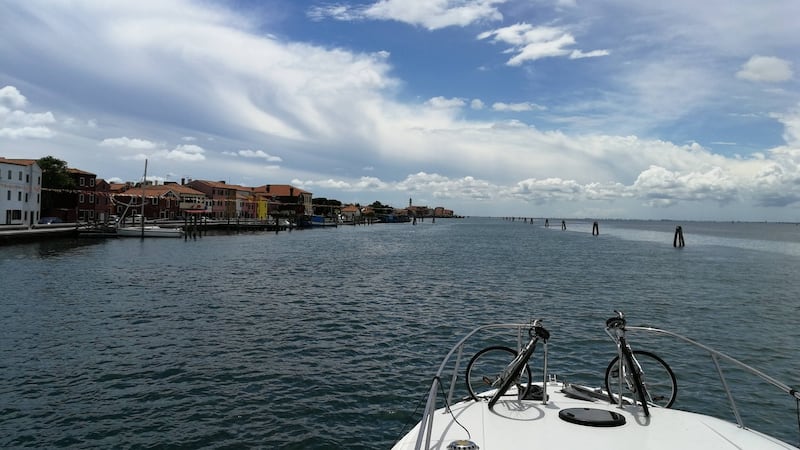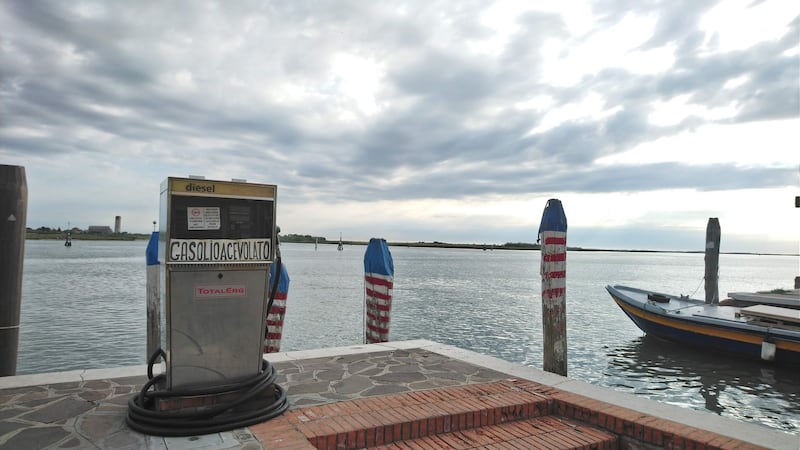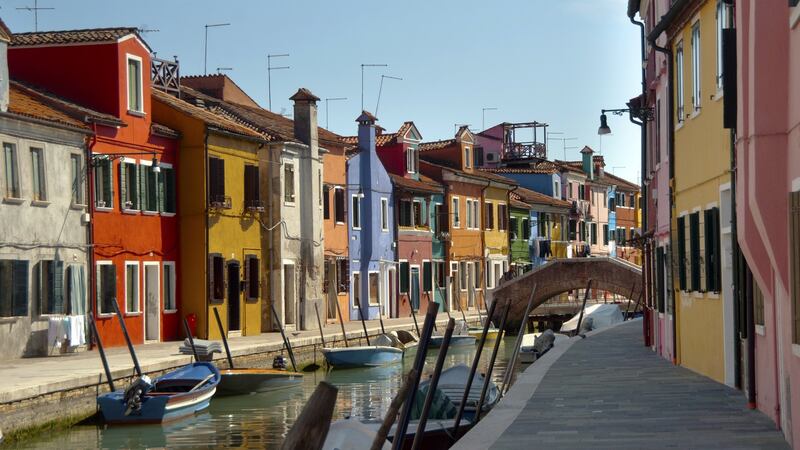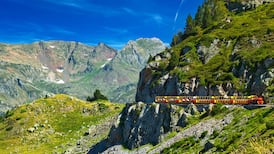Aaah . . . Venice! The timeless Serenissima; the most magical and beautiful city in the world. If only you could see it. If only you could get a real feel for the magic and mystery and beauty of Venice.
The trouble with Venice is that it is probably the most vivid example of mass tourism gone wrong in Europe. The hordes of selfie-taking, loud-talking, wandering tourists make it extraordinarily difficult to enjoy this wonderful city. It has been a tourism magnet for close to 1,000 years, but the advent of cheap travel has tipped it over the edge. Nowadays, it's more like Aaargh! Venice!
On a recent trip, I had the opportunity to appreciate this extraordinary place from a unique perspective, exploring the entire lagoon on a small cruise boat.
We set out from the little town of Casale sul Sile, a pretty place on the river Sile in the Veneto region, about 15km inland. The six-berth vessel had comfy cabins, a lounge, kitchen with fridge, shower and toilet, and a sun deck upstairs complete with a canopy to protect against sun and occasional rain.
First we were given a run through on the operation and navigation of the boat: how to steer, the importance of filling up with water every two days, how to manoeuvre the boat through the locks. But the most important thing, we were told, was to relax and take everything piano – ie, nice and slow.
The first five hours of the journey were spent navigating along the serpentine Sile, one of the best rivers in all of Europe in terms of the variety and quantity of wildlife, before emerging out into the lagoon. The water here is very shallow, and you need to stay within the channels, marked by bricole – structures made of three stout timber posts bound together like solid grey haystacks in the water.
Our first port of call was the island of Burano, a wonderful welcome to the Venetian Lagoon, with all manner and size of floating vessels going hither and thither. The island itself looked dreamlike in the evening sun, and the realisation that you’re in a modern 21st century place where every aspect of day-to-day life is still done by boat hits you right between the eyes. Burano is like a mini-Venice, with canals threading through its neat, multicoloured streets, where locals keep their boats moored in front of their houses.
We ambled through the crowds of visitors and stopped for a beer on the main street. Halfway through our first drink, the daytime hoards had disappeared, leaving a wide, picturesque street seemingly devoid of all but locals, chatting animatedly.



One local man, recently returned from the US to his home island, told me how the number of visitors had climbed exponentially in the last 10 years. He attributes this to the likes of Tripadvisor and Pinterest. Burano is still his favourite place in the world, though – “a bubble” where life continues at its own pace regardless of the outside world, just as it had done for centuries. And no matter how many tourists come during the day, they are virtually all gone by the evening.
Winding our way south, past the islands of San Francesco del Deserto and Sant’ Erasmo, we made our way towards the very edge of the lagoon, where three gateways offer access to the Adriatic Sea. The Venetians protected the natural features of the lagoon by building a protective wall, which grew into the long thin island of Pellestrina – just south of the natural sandbar island of Lido di Venezia and past a gate where hexagonal red-brick Venetian forts stand guard, allowing larger ships pass through to the open sea.
Pellestrina is an ordinary fishing community, completely untouched by mass tourism. It’s as heavenly a spot as you’ll find, with lines of busy fishing boats along the quay by the beautiful village. Offshore, on the lagoon side, fishing huts stand on stilts, while on the sea side, there’s a long beach upon which the waves of the Adriatic lap gently.
Further south again is the town of Chioggia. Joined to the mainland, it's much more lively and touristy, though not overrun, where Italian tourists outnumber foreigners. Its huge fish market is a highlight and its ancient buildings and canals form a perfect mirror of Venice itself.
Leaving Chioggia we turned back up along the edge of the lagoon and into Venice itself. Approaching from this angle, you see St Mark’s Square, Doges Palace and the towering Campanile in all its glory, as sailors from another era would have seen it.
The marina at Sant’ Elena is a relatively pricey place to park the boat (€85 per night compared with the free moorings in the other places we stopped). But it is well worth it to be able to rise just before dawn and make the 20-minute walk to St Mark’s Square at the only time of day when this city is truly Serenissima.
Aaah… Venice!











